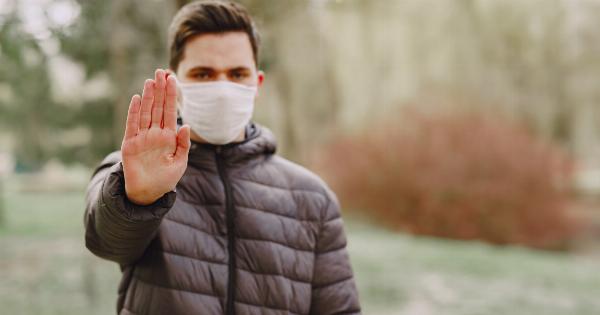With the global pandemic of COVID-19, commonly known as the coronavirus, there is a significant concern about the ways in which the virus can spread.
As the virus primarily spreads through respiratory droplets, people naturally wonder if tears can also transmit the virus. In this article, we will explore the possibilities and shed light on the topic.
Understanding the transmission of COVID-19
Before delving into the specific question about tears, let’s have a quick overview of how COVID-19 spreads.
The primary mode of transmission is through respiratory droplets generated when an infected person coughs, sneezes, talks, or even breathes heavily. These droplets can contain the virus and infect others who come into contact with them.
Additionally, the virus can spread through close contact with an infected individual, usually within six feet.
This can occur through respiratory droplets but also by touching surfaces or objects contaminated with the virus and then touching the face, particularly the mouth, nose, or eyes.
Tears and COVID-19
Now let’s address the specific question at hand: Can tears spread Kronovirus?.
Currently, there is limited evidence to suggest that tears can spread COVID-19. Tears are primarily composed of water, salts, antibodies, and enzymes, which are necessary for the eye’s health and immune function.
According to experts, the virus needs certain receptors to enter the cells and replicate. These receptors, such as ACE2, are predominantly found in the respiratory system rather than the eyes.
Therefore, it is less likely for the virus to spread through tears.
However, it is essential to note that tears may still carry the virus if someone infected with COVID-19 coughs or sneezes directly into their hand and then touches their eyes without proper hand hygiene.
In such cases, tears can potentially carry the virus and infect others if they come into direct contact with the infected tears.
Precautions to take with tears
Although the risk of transmitting COVID-19 through tears is relatively low, it is still crucial to take appropriate precautions to minimize the risk of infection. Here are some guidelines:.
1. Avoid touching your face:
Regardless of whether tears can carry the virus or not, touching your face, especially your eyes, can increase the risk of transmission if you have come into contact with infected respiratory droplets on surfaces.
2. Practice good hand hygiene:
Regularly wash your hands with soap and water for at least 20 seconds, especially after coming into contact with potentially contaminated surfaces. If soap and water are not available, use hand sanitizer with a minimum of 60% alcohol content.
3. Maintain social distancing:
Since the primary mode of transmission is respiratory droplets, maintaining a distance of at least six feet from others can significantly reduce the risk of exposure and transmission.
4. Follow respiratory etiquette:
Cover your mouth and nose with a tissue or your elbow when coughing or sneezing to avoid the spread of droplets that may contain the virus.
5. Use personal protective equipment:
If you are in a high-risk environment or have close contact with individuals who may be infected, wearing a mask, goggles, or a face shield can provide additional protection.
Conclusion
While there is limited evidence to suggest that tears can spread COVID-19, it is crucial to continue taking precautions to minimize the risk of transmission.
Following guidelines such as good hand hygiene, social distancing, and respiratory etiquette remain essential in preventing the spread of the virus.






























